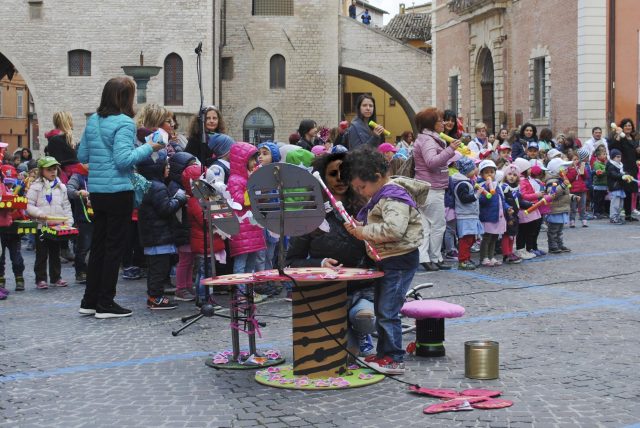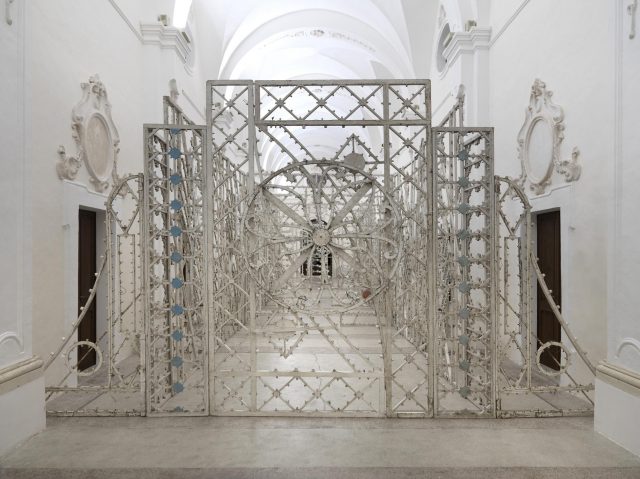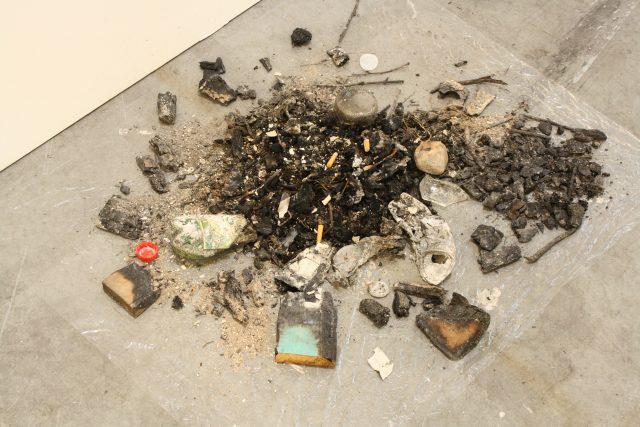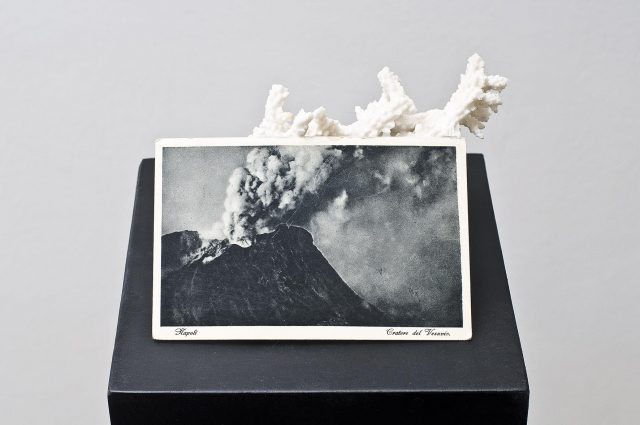Arte
Unlike earlier editions, in which at the centre of the story told with pictures, presented in the course of the festival, were the Verzocchi Collection and the attempt to measure the distance between the Italian post-war period portrayal of work and the present one, this year’s invitations meet the need of having a closer dialogue with the festival and its expansions, reacting to the title’s suggestions: what remains.
Therefore: what remains of a work of art (in space), when it is no longer there? How can its presence expand itself beyond – that is before and after – the here and now of experience? What remains – in the form of remains and traces – after a performing art piece? Is it possible for a sculpture to unleash an energy which extends itself into an action?
The artists that take part in this edition of Ipercorpo – Chiara Camoni, Flavio Favelli, Alessandro Piangiamore, Italo Zuffi – have all worked, in different ways and from different viewpoints, on the topics of memory, recollection and passage of time.
So, for example, many works and performing art pieces by Zuffi reflect upon a dimension of time which becomes duration, resistance and the testing of a limit; Piangiamore’s sculptures are sometimes a non-authorial production, the ruins produced by landscape and atmosphere; Favelli’s works – pieces of furniture, paintings and objects – came out of the assembly of private and collective memory fragments; in Camoni’s work, the landscape takes the shape of a kind of an archaeology of experience and of the present.
The works and interventions by the participating artists will be displaced in spaces which are different from the ex poultry processing unit of Romagna and will be arranged, throughout the festival period, with slight time shifts: they won’t form a consistent story, but considerations and openings, sensitive points of the very same geography.
Davide Ferri

Chiara Camoni (Piacenza, 1974) works and lives in Seravezza (LU). Among her latest exhibitions: Gli immediati dintorni, Nomas Foundation, Rome; Del questo e del quello. Del sé e dell’altro. Come tutto., Studio LCA, Milan; La Pazienza è virtù dei Manufatti, Spazio A, Pistoia; Tutta l’Italia è silenziosa, Reale Accademia di Spagna, Rome; Follerre & Folleroo, Arcade Fine Arts, London; To Continue. Notes towards a Sculpture Cycle, Nomas Foundation, Rome; Fortuna, Autocenter, Berlin; certe cose, Spazio A, Pistoia. For some years she has been curating the programme of MAGra, the art museum of Granara (PR), with Alessandra Andrini and Luca Bertolo.

Flavio Favelli works and lives in Savigno (Bologna). After graduating in History and Oriental Studies at the University of Bologna, he took part in the Link Project (1995-2001). He exhibited his personal projects at the MAXXI in Rome, at Centro per l’Arte Pecci in Prato, at Fondazione Sandretto in Turin, at Maison Rouge in Paris and at 176 Projectspace in London. He took part in “Italics” at Palazzo Grassi in 2008 and in two Biennali di Venezia: the 50° (“Clandestini”, curated by F. Bonami) and the 55° (Padiglione Italia, curated by B. Pietromarchi). In 2015 the work Gli Angeli degli Eroi was chosen by the Quirinale to commemorate military’s fallen warriors in the celebration of the 4th November.

Italo Zuffi (Imola, 1969) lives in Milan. He teaches performance and techniques of sculpture for the Academy of the fine arts In L’Aquila. From 2011 is Guest lecturer in performance at the Royal Academy of Art dell’Aja.
Personal exhibitions (recent): Quello che eri e quello che sei, Nomas Foundation, Roma (2015); Gli ignari, appartamento privato, Milano (2013); La penultima assenza del corpo, Fondazione Pietro Rossini, Briosco (2012); Zuffi, Italo, Pinksummer, Genova (2010). Mostre collettive (recenti): Esercizi di Rivoluzione, MAXXI, Roma (2014); Le leggi dell’ospitalità, Galleria P420, Bologna (2014); Per4m, Artissima, Torino (2014); I baffi del bambino, Lucie Fontaine, Milano (2014); To continue. Notes towards a Sculpture Cycle | Scala, Nomas Foundation, Roma (2014); La Pelle – Symphony of Destruction, MAXXX Project Space, Sierre (2014); Le statue calde, Museo Marino Marini, Firenze (2014).

Born in 1976, Enna, Sicily, in 1976, Alessandro Piangiamore lives and work Rome. Working in various mediums such as sculpture, installation, assemblage, photography, his poetical and intimate vision often leaves to chance the final result, wilst abstracting itself from a temporal dimension. Amongst his recent exhibitions: Primavera Piangiamore, Palais de Tokyo, Paris, Modules-Fondation Pierre Bergè- Yves saint Laurent (2014); Milk Revolution, American Academy in Rome, a group show compiled by CURA (2015); Meteorite in giardino, Fondazione Merz, Turin (2014); Tutto il vento che c’è, GAMeC Galleria d’Arte Moderna e Contemporanea, Bergamo (2011); Re-Generation, MACRO, Rome (2012), When In Rome, Italian Institute of Culture, Los Angeles (2011); Witness of ordinary facts, Magazzino, Rome (2011).